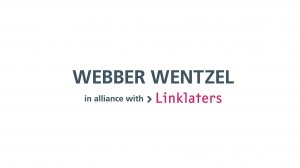In Africa, dysfunctional governments are often unable to allocate sufficient funds for essential aspects of healthcare. This results in a shortage of new primary and specialised hospitals, little local pharmaceutical and medical device manufacture and the inability to train doctors beyond undergraduate level, creating a shortage of medical specialists.
In a recent seminar hosted by Invest Africa and moderated by Webber Wentzel, panelists Silven Chikengezha, Liza Eustace, Jen Pedersen, Jasen Smallbone and Dr. Sue Tager, shared their insights on how to tackle the problems of financing healthcare in Africa, and building a pipeline of medical professionals who remain in Africa.
Funding
From the perspective of the IFC, the obvious need for greenfield hospitals in Africa is not sufficient to attract funding. To be attractive, projects need to meet certain criteria.
The first is that it must have a sponsor with experience in construction and operations. The second is that it has to have the potential to grow. It takes at least three years for a hospital to start making returns. Primary care is an identified area of potential growth on the continent, but it offers low margins so it needs to build up volumes. If the hospital is a primary healthcare facility that addresses an identified need in the local community, it is more likely to attract reliable footfall. But there is very little revenue in basic services like treating TB, AIDS and giving vaccination, so the facility should offer a range of affordable treatments.
The third criterion for any hospital project seeking funding is that it should have, or will be able to attract suitably qualified staff. Doctors like to work in complementary practice groups, so the hospital should be able to offer an attractive environment for medical professionals.
The next important issue is the certainty of cash flow. Although government-sourced revenue for the hospital can provide a steady income stream, governments can be slow payers. It is important to look at each government’s history of making timely payments. Commercial banks will also consider the affordability of the hospital’s services, given that a very small proportion of Africa’s population has medical insurance. In some countries, governments require employers to pay their employees’ medical bills, which provides a level of comfort to the banks. Technology can help to improve affordability, for example, innovations such as monitors that track the temperature of heat-sensitive medicines in transit, which reduces wastage.
A fifth critical issue for funders is the way the funding is structured. If a large hospital project is structured with 60-70% debt from its initial stages, it is likely to struggle to meet interest payments. It is better to start with a smaller facility that is scaleable, and structure the funding so that there is more equity than debt in the early years.
ABSA noted that they would seek strong equity holders before considering debt, and they will look carefully at who the main equity funders are. This is an area where the IFC and other Development Finance Institutions (DFIs) can play a role because they are usually willing to take the “first loss” risk, which encourages commercial banks to extend debt. Commercial banks take comfort from developers with strong balance sheets.
An emerging source of funding for healthcare projects in Africa (as well as other projects, such as in energy, water and education) are social impact bonds, in which an institutional funder will lend money to an implementer that can correctly manage a project that meets a need – often a need identified by the government. Corporates should be pooling their available funds to create scaleable projects that will make an impact.
If healthcare financing is intended to support existing service providers in Africa, it has to adapt to the capacity of what are often very small- to medium-sized businesses. These businesses, which may be anything from manufacturers of medical devices to providers of digi-health services, need far less than USD 20-million, so they tend to be ignored. But funding is essential to help established businesses build scale. This is another area where DFIs and commercial banks working together can help, as the DFI can provide the first loss facility which allows commercial banks to take risk on smaller clients.
Public-private partnerships
The pandemic made it clear that perceived obstacles between public and private entities in providing healthcare together could be overcome if there was the right will and people in the room.
Speakers discussed the Wits Donald Gordon Medical Centre as an example of a successful PPP, which could be replicated elsewhere. The Donald Gordon offers treatment to the private sector, and the derived profits are used to train medical students from Wits University, which is the public partner. The centre also performs liver transplants for all patients, both public and private. Mediclinic has a share in Donald Gordon but does not receive dividends. All profits are recycled back into the hospital.
A PPP model for the provision of healthcare needs partners who have similar levels of sophistication and can work together. Governments have to appreciate that the role of the private sector is not merely to bring money so that the government can continue running things the way they have always done. Private sector partners should be allowed to introduce the levels of efficiency in delivery that are typically found in the private sector.
Written by Robert Appelbaum & Prelisha Singh, Partners at Webber Wentzel
EMAIL THIS ARTICLE SAVE THIS ARTICLE ARTICLE ENQUIRY
To subscribe email subscriptions@creamermedia.co.za or click here
To advertise email advertising@creamermedia.co.za or click here











